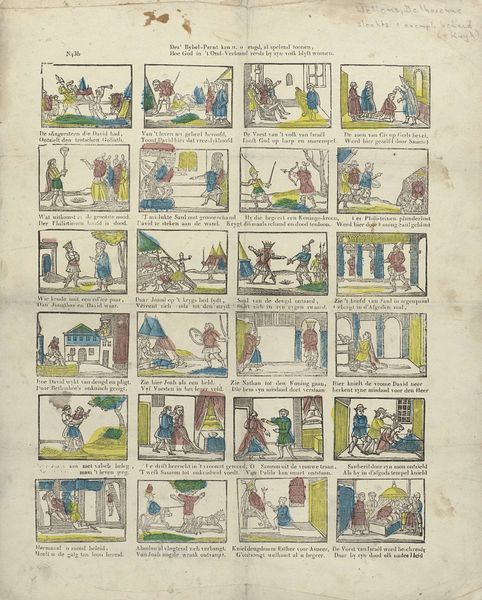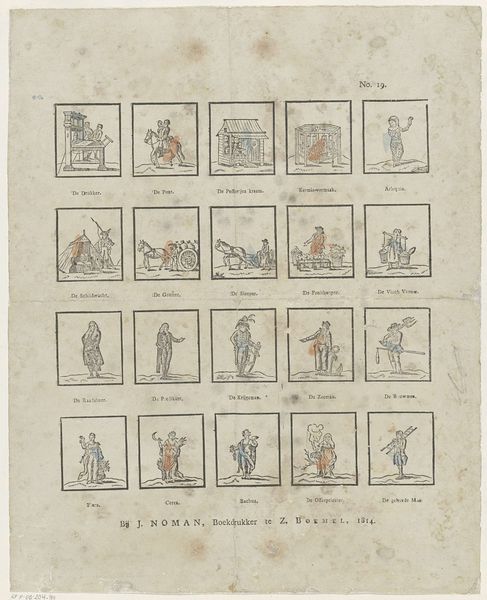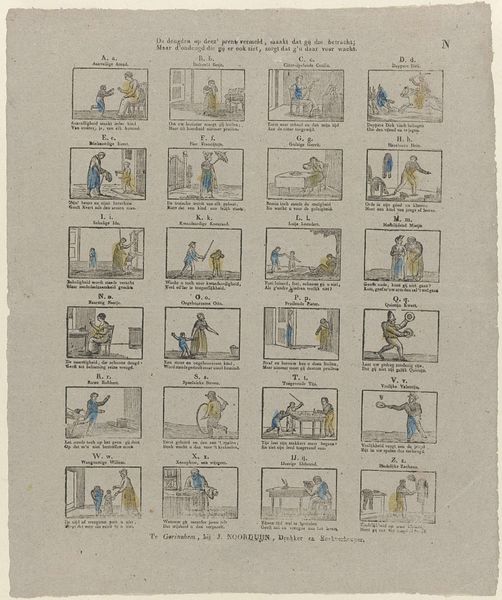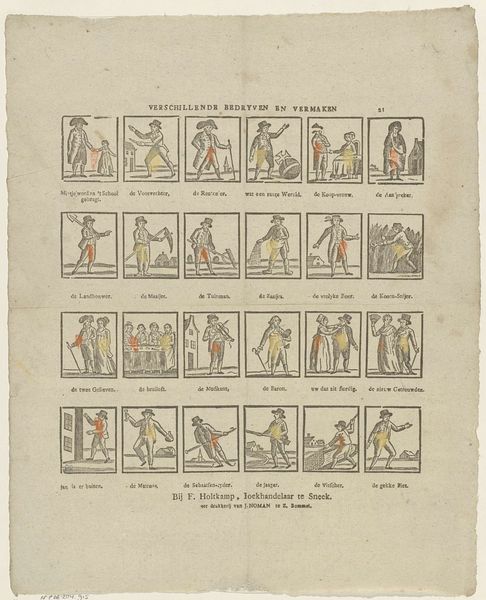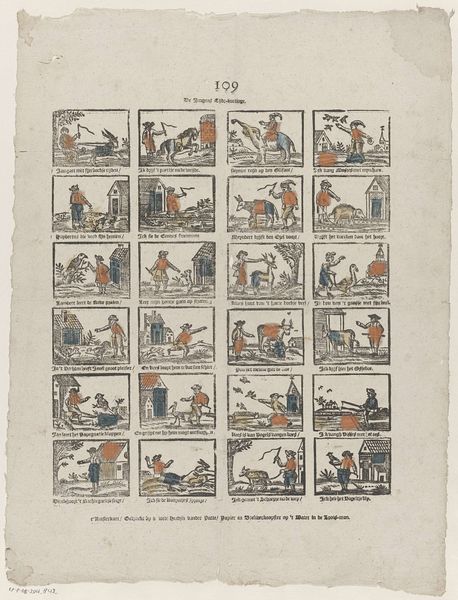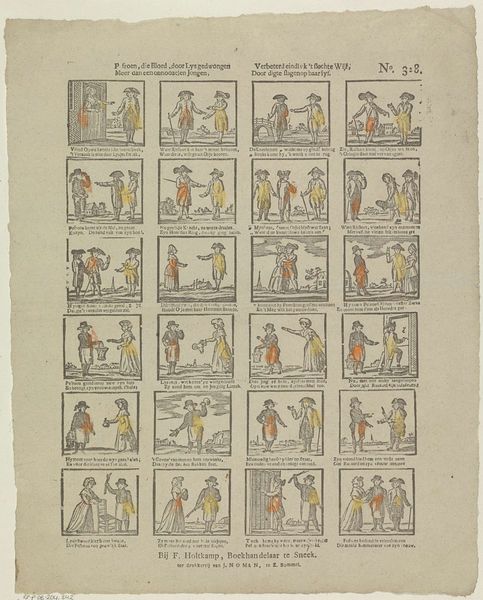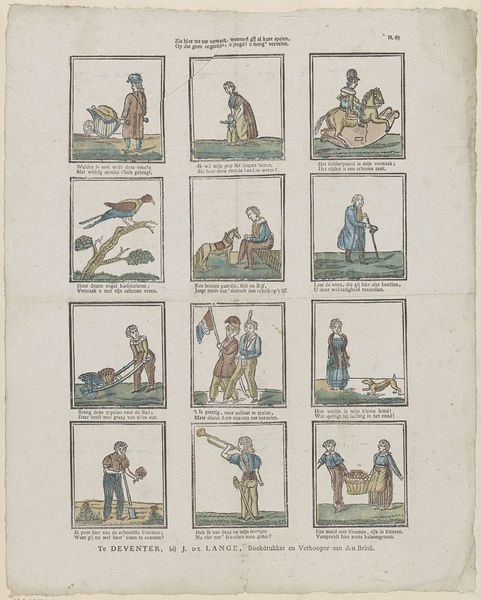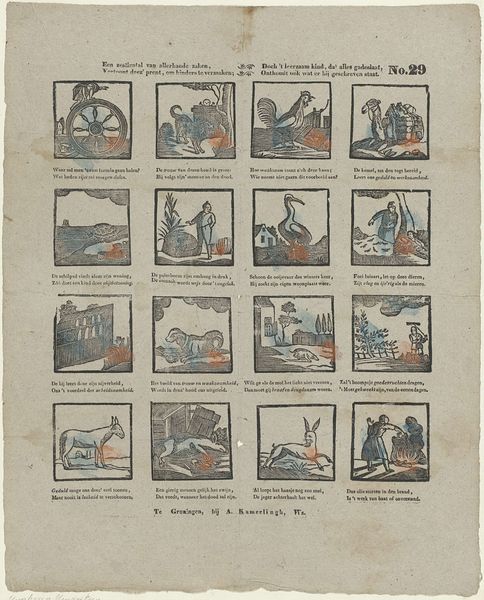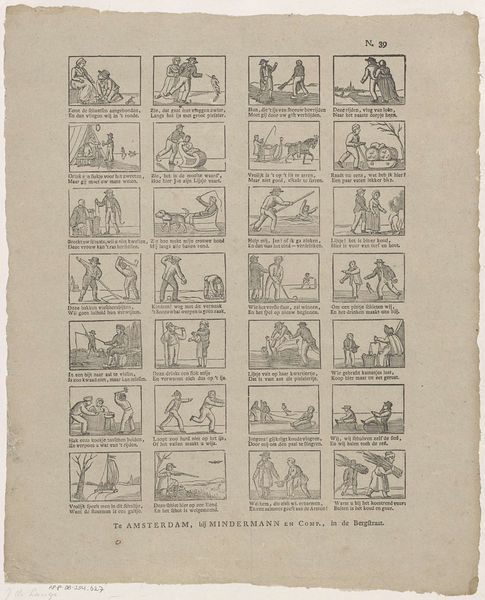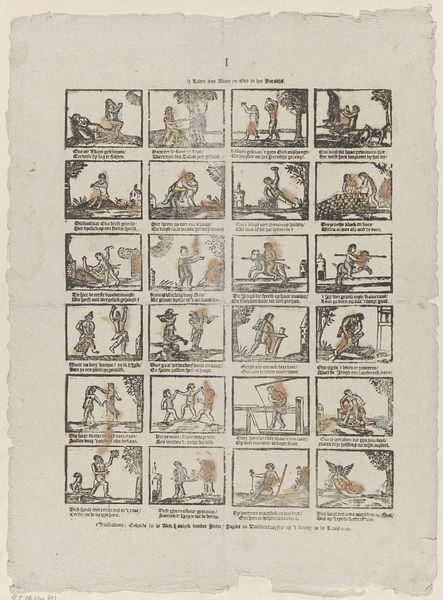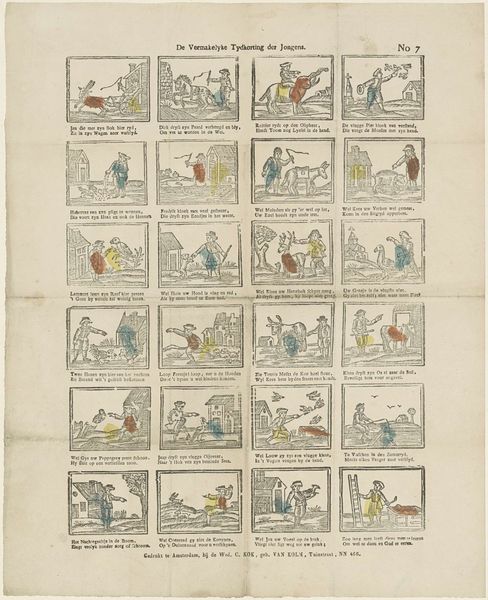
graphic-art, lithograph, print, etching
#
graphic-art
#
narrative-art
#
lithograph
# print
#
etching
#
folk-art
#
genre-painting
#
watercolor
Dimensions: height 423 mm, width 334 mm
Copyright: Rijks Museum: Open Domain
Editor: This lithograph, "Wintervermaak," likely created between 1828 and 1849 by Erve Wijsmuller, is quite intriguing. Its compartmentalized scenes feel like a comic strip of daily life. I'm curious about your insights; what do you see as the defining characteristics of this piece? Curator: Formally, we can observe a series of vignettes arranged in a grid-like structure. The use of line is paramount, defining each figure and object within the scene. Note the rudimentary application of color; it serves not to mimic reality but to delineate separate elements and contribute to the overall compositional rhythm. Editor: I see that. The colors are quite simple, almost like they're just filling in the outlines. Does that flatness contribute to a particular effect? Curator: Precisely. It reinforces the two-dimensionality of the print, reminding us that we are engaging with a constructed representation, not a window onto the world. Consider also how the artist utilizes repetition within each square: recurring shapes, figures, and gestures that contribute to an overall structural harmony. Each rectangle creates a mini universe in dialogue with each other and a grid like formal constraint. Editor: That's fascinating. The formal repetition does give it a structured, almost rhythmic quality. I hadn't considered it that way before. I learned that this print utilizes several kinds of marks and simple shapes and colors in order to represent a series of figures within 24 rectangular mini universes of this lithograph.
Comments
No comments
Be the first to comment and join the conversation on the ultimate creative platform.
